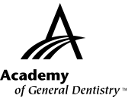|
Exercise No. 350
Subject Code: 730
Oral Medicine, Oral Diagnosis, Oral Pathology
The 15 questions for this exercise are based on the article, Distinguishing and diagnosing contemporary and conventional features of dental erosion, on pages 46-52. This exercise was developed by Thomas C. Johnson, DMD, MAGD, in association with the General Dentistry Self-Instruction committee.
|
Reading the article and successfully completing this exercise will enable you to:
- recognize and identify fundamental clinical characteristics of contemporary erosion lesions;
- understand the association of erosion with the modern diet; and
- understand the importance of a complete exam, the patient’s systemic health profile, dental health, dietary history, and oral hygiene habits.
|

